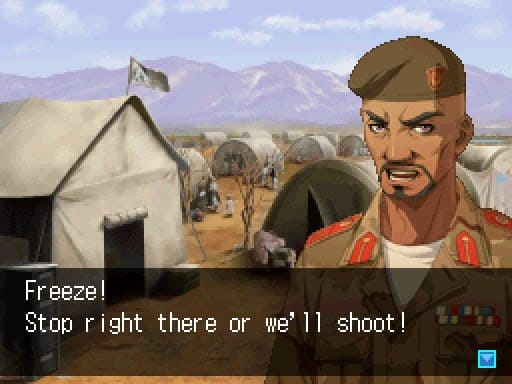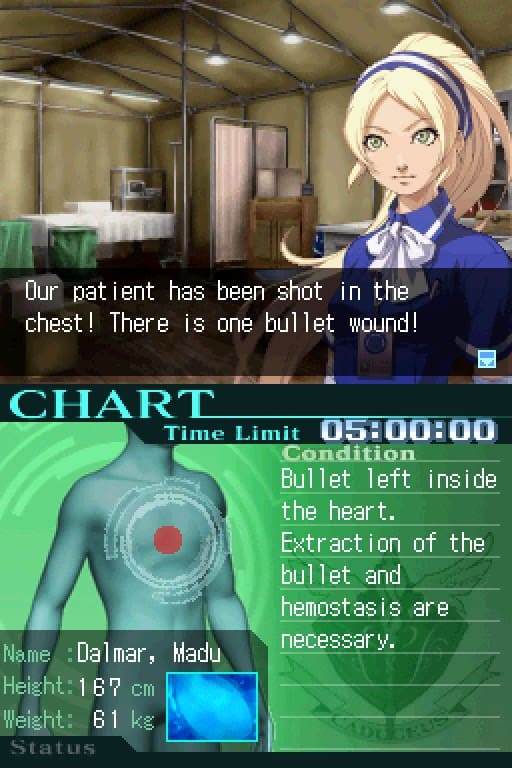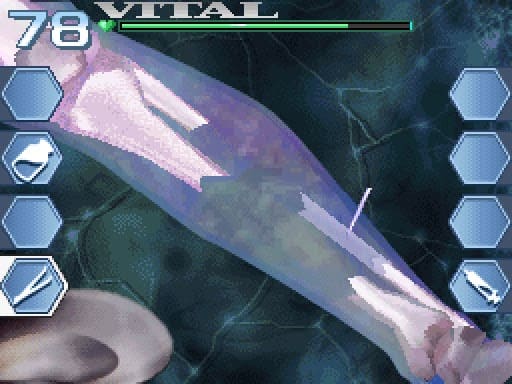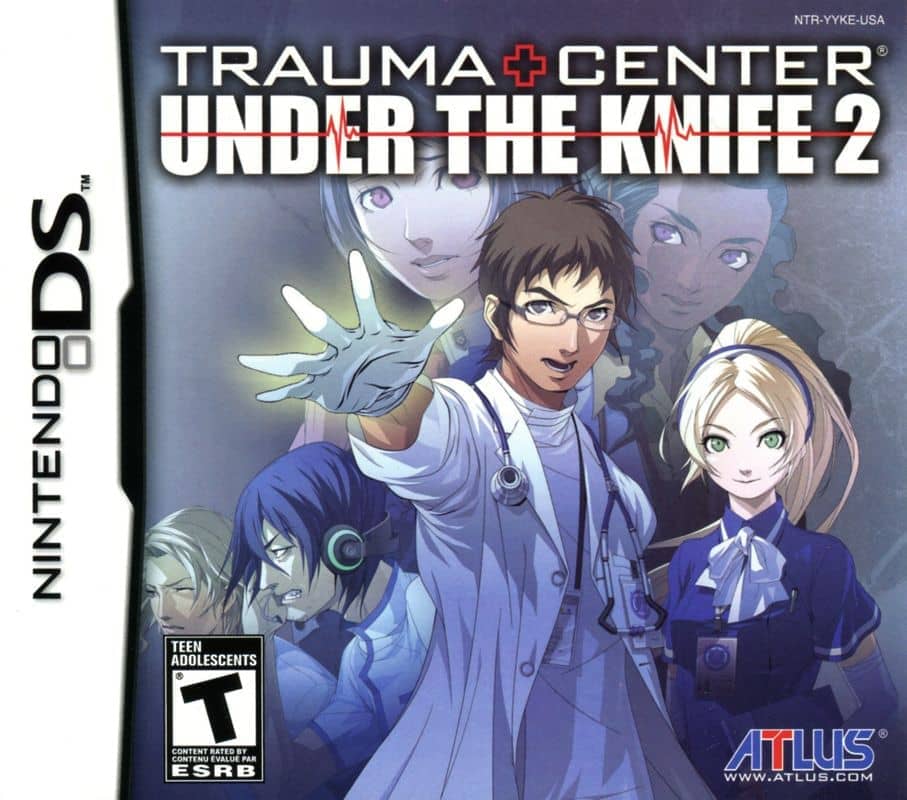Background
Trauma Center: Under the Knife 2 was developed and published by Atlus, released on July 1, 2008, in North America and August 7, 2008, in Japan for the Nintendo DS. It notably became the first game in the series to debut in America before Japan.
Directed by Daisuke Kanada and produced by Shinjiro Takada, the game continued the medical drama and surgical simulation gameplay of its predecessor. The addition of Masayuki Doi for Under the Knife 2 brought fresh artistic perspectives and character designs, distinguishing it visually from the original game while maintaining continuity in key creative roles.
The music for the game was composed by Atsushi Kitajoh and Kenichi Tsuchiya, each contributing to the distinctive soundtrack that complements the intense atmosphere of the Trauma Center series.
Vanguard Works also contributed to the game’s development, likely providing support in various aspects such as art, animation, or programming, as they typically do for projects under Atlus (MobyGames, n.d.).

Experience
Prior to playing Trauma Center: Under The Knife 2, I finished the first game on my Nintendo 3DS and have completed countless Atlus titles such Persona 2: Innocent Sin, Persona 3: FES, Persona 3: Portable, Persona 4: Golden, Persona 5, Shin Megami Tensei III: Nocturne Maniax, Shin Megami Tensei IV, Shin Megami Tensei V, Shin Megami Tensei: Soul Hackers, Shin Megami Tensei: Devil Survivor Overclocked, Shin Megami Tensei: Soul Hackers 2, Shin Megami Tensei: Strange Journey Redux, Devil Summoner: Raidou Kuzunoha vs. the Soulless Army, Jack Bros., Catherine, Tokyo Mirage Sessions #FE Encore, and more.
I am familiar with Masayuki Doi’s art from playing Shin Megami Tensei IV, Shin Megami Tensei V, and being a fan of his art prior to playing Trauma Center: Under The Knife 2.

Impressions
Upon launching Trauma Center: Under the Knife 2, you are greeted with a montage video showcasing characters in Masayuki Doi’s new art style. The graphics have significantly improved, featuring higher pixel quality and enhanced 3D models for surgical procedures. This sequel’s higher budget is evident in its overall quality compared to the previous entry.
The game introduces difficulty options, a quality-of-life feature beneficial for those who struggled with the late stages of the first game. The story begins in a warzone in Africa, with immersive sound design and brief voice-acted dialogue. The new soundtrack complements the intense atmosphere seamlessly.
Surgical operations are now more challenging, with new puzzles like extracting and reconstructing shattered bones using antibiotic gel. Performance is ranked, and throughout my normal difficulty playthrough, I achieved A to S ranks on every level. The dialogue maintains the medical drama style, reflecting Atlus’s dedication to the series.
The plot is more intricate and the stakes are higher, with a finale that is far more satisfying than the first game. Derek Stiles, the protagonist, is given more depth and a more personal story, enhancing the emotional engagement. Familiar tools from the previous game return, but the operations require greater precision and depth. Doi’s art, improved writing, better audio quality, and a compelling medical conspiracy make the sequel more engaging. Although some operations can be challenging for newcomers, they are fairer than those in the previous game. The final boss is particularly tough, but it provides a rewarding sense of accomplishment once defeated.

Verdict
Trauma Center: Under the Knife 2 builds significantly on its predecessor, delivering a more polished and engaging experience. With enhanced graphics, thanks to Masayuki Doi’s new art style and improved 3D models, the game’s visual appeal is immediately apparent.
The addition of difficulty options makes the game more accessible, addressing concerns from the previous installment. The story, starting in a warzone in Africa, is more immersive, with improved sound design and a compelling soundtrack.
The surgical operations introduce new challenges and puzzles, making gameplay more dynamic. Character development, particularly for protagonist Derek Stiles, adds depth and emotional resonance, while the plot is more intricate and high-stakes.
The return of familiar tools combined with the need for greater precision enhances the surgical experience. Overall, Doi’s art, superior writing, high-quality audio, and an intriguing medical conspiracy make this sequel highly engaging.
Although some operations are challenging, they are fairer, and the rewarding difficulty curve culminates in a satisfying final boss battle. Trauma Center: Under the Knife 2 successfully improves on nearly every aspect of the original, providing a richer, more compelling experience.
TLDR
Rating: 8.5/10
In Summary: Trauma Center: Under The Knife 2 impresses with enhanced visual and audio quality, engaging story and character development, dynamic gameplay, and improved tools and writing. While some players may find achieving top scores challenging and new bosses/mechanics frustrating, its overall improvements and engaging content earn a solid rating of 8.5 out of 10.
References
- MobyGames. (n.d.). Trauma Center: Under The Knife 2 – Credits. Retrieved from https://www.mobygames.com/game/nintendo-ds/trauma-center-under-the-knife-2/credits





Leave a Reply